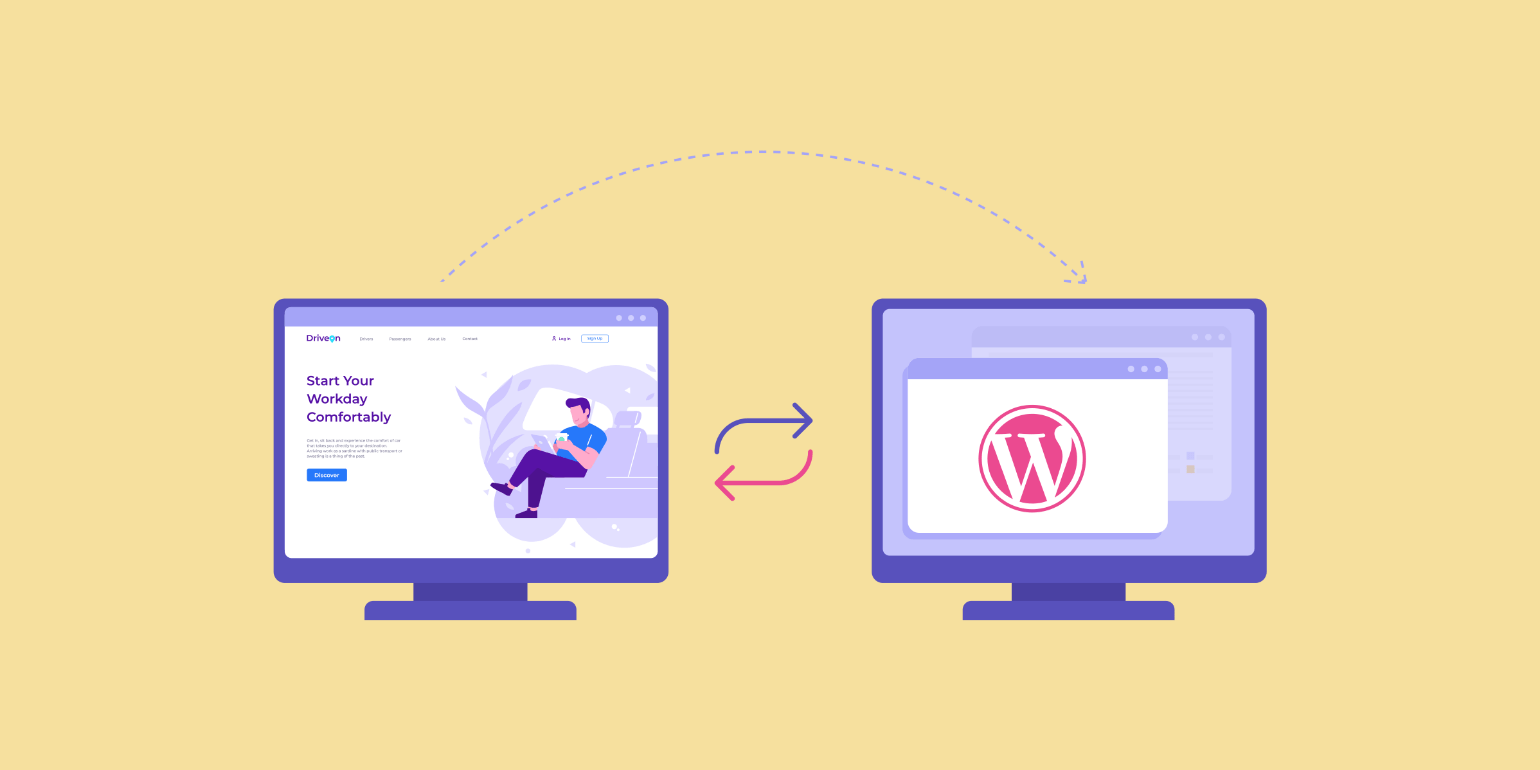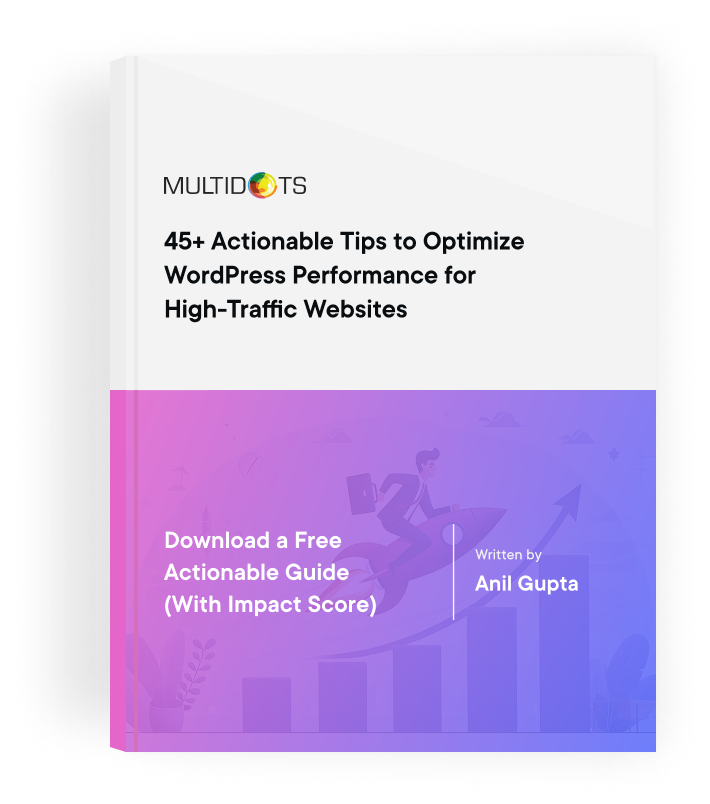Best Practices for a Complex WordPress Website Migration
Learn the best practices for successfully migrating a complex WordPress website while minimizing downtime and data loss

Table of Contents
Technology breaks. It’s a cold hard truth that on a long enough timeline, some critical component of some technology that’s critical to you and your business will malfunction. That’s just the way things go sometimes.
Needs change. Another cold hard truth is that what you needed yesterday to power your business looks a lot different today. And what you’re counting on right now? That’s bound to look quite a bit different in the future.
Combine those two things – the inherent eventual instability of technology and the shapeshifting needs of your business – and at some point in time, you’re likely to need to consider new infrastructure options to host your critical business applications…and your website. As part of this process, evaluating and selecting the right hosting plan and hosting service is a crucial early step to ensure optimal performance, security, and scalability.
But whether you choose to host on-premises, in the cloud, or with a conventional host, migrating your digital assets requires detail and diligence to ensure not just security but the fidelity of data and application functionality as well. A lot is at stake with any migration and all the moving parts can be a lot to swallow. To manage this complexity and ensure all critical steps are covered, it's essential to use a WordPress migration checklist and a pre migration checklist before starting the process.
The following migration best practices will keep you from choking during your next website migration.
Introduction to WordPress Migration
Migrating a WordPress site involves moving your website from one hosting provider, server, or environment to another. Whether you’re upgrading to a more robust hosting solution, consolidating multiple sites, or simply seeking better performance and security, WordPress migration can be a complex undertaking. A successful WordPress migration requires careful planning, attention to detail, and a clear understanding of the steps involved. From manual migration to leveraging reliable migration tools, each approach has its own benefits and challenges. In this guide, we’ll break down the migration process, highlight best practices, and help you ensure a smooth transition to your new hosting provider or environment.
1. Define Success Metrics Early
Defining what success means early on is perhaps the most crucial aspect of site migration. Why? Because properly identifying what makes a successful migration will help dictate the path of the migration itself, including how you will negate any obstacles or challenges along the way.
First, let’s identify why you might be considering a new hosting infrastructure in the first place. There could be a number of reasons why a business selects a new hosting provider:
- The current provider or hosting solution could be experiencing downtime issues.
- The current provider or hosting solution may not offer proper security for the infrastructure.
- The current provider’s infrastructure may not perform well enough to support your digital strategy.
- The current provider or hosting solution may be too expensive.
- The current provider or hosting solution may not provide the support that your business needs.
- Your needs have changed due to new initiatives, a change in traffic patterns, or the introduction of new software applications.
When considering a migration, it's important to evaluate your current host and compare the features, performance, and support offered by different web hosts and hosting providers. This will help ensure you select the best WordPress host for your specific needs and avoid repeating issues experienced with your previous provider.
Whatever the reason, make sure that your new infrastructure solution or hosting provider solves the specific problem or problems effectively. All too often we see aggravated website owners switch from one inadequate or unsatisfactory hosting provider to another, essentially replacing one set of problems with another. Close review now will save you from another costly site migration in the near future.
The next step would be to define the success metrics of the overall migration itself. Here are just a few suggestions for defining success for your next migration.
- Mitigating loss of traffic. Schedule the migration during low-traffic hours would be crucial.
- Migrating only the most important element. The site migration is also your chance to clear out any potential "clutter" from your website. Leave out any duplicate pages, unnecessary subsites, non-cached images, and unrequired plugins. That said, make sure you understand and preserve any critical redirects or URLs that are part of the site, even if they aren’t active. Many migrations result in the loss of YEARS of SEO goodwill…goodwill that often will take years to recapture once it’s lost.
- Testing for viability during the migration process. Creating a backup, running a test website on your new hosting server, and managing your visitors should be on the agenda as well.
By having a list of what would define a successful migration process for your enterprise, you can ensure the handling of the whole procedure in a streamlined manner. Checking off successful actions right down to the task itself creates an environment fit for success.
2. Create a Migration Checklist of What Does and Does Not Need to Be Migrated
This is where your success metrics will come into play. Since you have already identified your website’s most successful and crucial elements, you will know that migrating them is of the highest priority.
At the same time, not migrating any excess elements to the new hosting server could actually prove to be more beneficial in the long run. Clearing the clutter could cut the overall migration time by a large margin, keep your new infrastructure from running into load time issues, providing you with a more streamlined website structure. Be sure to review your site structure and ensure that all essential media files, such as images and videos, are included in your migration plan.
Ideally, you should make a list of what should be migrated to the new hosting server and what should be redacted and left behind. This list should be made a few weeks ahead of your actual migration date. When making this list, consider whether you need to migrate the entire site, including files, databases, and configurations, or only selected components based on your business needs. Relevant teams should make sure that all critical components are still part of the migration process.
Think of this activity as decluttering your website and making its operations on the new hosting server as a new start. Similar to how we feel when moving into a larger, cleaner, and more comfortable space, your website will have the virtual room to function optimally as well.
3. Back Everything Up and Leave It In Place For a While
As defined above, making a backup of your website is certainly imperative. Even if you have planned everything meticulously to the last possible detail, there is no guarantee that things will go exactly to the set plan.
Undefined hurdles and hiccups may arise during the process, and not having a contingency plan may leave your website and business stranded.
In order to avoid this scenario, make sure that each and every element of your current website is stored safely in a backup. When creating your backup, generate a downloadable zip file that contains all your WordPress core files, themes, plugins, and media uploads to ensure a complete and easy-to-transfer archive. Don’t forget to include your database and the wp-config.php file, as this file is critical for your site’s configuration—be cautious when editing wp-config.php, since mistakes here can cause issues during migration. Ensure to make multiple copies of that backup and have it stored virtually as well as in physical drives secured in the hands of a few authorized personnel.
Additionally, it is a good idea to leave the existing and operational version of your website online in its current form until you are beyond-certain that the migration has been successful. Simply shutting down your old infrastructure at the first possible moment is a recipe for disaster.
As a note, don’t wait until your contract or obligation to your current hosting provider is about to expire to try and perform a last-minute migration. Part of a successful migration is giving yourself time to not just plan and execute the migration but also time to test and verify that the work is complete.
Manual WordPress Migration
Manual WordPress migration gives you complete control over every aspect of the migration process, making it a preferred choice for those with technical expertise or unique site requirements. This method involves downloading all your WordPress files via FTP, exporting your WordPress database using tools like phpMyAdmin, and then uploading these assets to your new hosting environment. Once your files and database are in place, you’ll need to update your wp-config.php file with the new database credentials and ensure that your new hosting environment matches the settings of your previous server. Manual WordPress migration also requires you to set up a new database, adjust any necessary configurations, and thoroughly test your site to confirm everything is working as expected. While this approach can be time-consuming, it offers flexibility and control, making it ideal for complex migrations or when moving to a custom new hosting environment.
Using Reliable Migration Tools
For many site owners, using reliable migration tools can streamline the WordPress migration process and minimize the risk of errors. Migration plugins like Duplicator, All-in-One WP Migration, and Migrate Guru are designed to automate much of the heavy lifting, from backing up your site to transferring files and databases to your new hosting environment. These migration plugins can handle complex tasks with just a few clicks, ensuring a smooth transition to your new hosting. When selecting a migration plugin, look for one that is compatible with your hosting environment, offers robust support, and has a proven track record of reliability. By leveraging these tools, you can simplify the WordPress migration process, reduce downtime, and ensure your site is up and running quickly on your new hosting environment.
4. Test, Run, Repeat
Remember how testing was on your agenda during the planning process? This is where you put it to work. Running tests on your website once it has been migrated to the new infrastructure is a crucial aspect of the overall migration process. Ideally, this website would be a copy of your current WordPress site.
Testing gives you an idea of how your new hosting infrastructure functions with your website in terms of load time, content delivery, and overall performance. It is important to monitor your website's performance after migration to ensure optimal speed and user experience. If you find anything to be off the mark, then you can work to fix the issue prior to making your DNS cutover. But testing does not stop there.
Once the migration process has been completed, you will need to run additional tests on your actual domain to see if everything is still working as it was with the previous website. This includes redirects, functions, and integrations with other services. Be sure to check for broken links and verify that all URLs, images, and resources are functioning correctly to maintain SEO ranking. Access the permalink settings in the WordPress dashboard and regenerate your htaccess file to prevent 404 errors and resolve any permalink issues. If any metrics have been affected, you should work not just to solve the issue but also to understand why the problem happened in the first place. Additionally, use search replace tools or plugins, such as Better Search Replace or Search Replace DB, to update URLs and database entries as needed after migration. Aside from preventing future problems, this knowledge can serve as a great opportunity to further increase the performance of your website.
Similarly, make sure to pay ample attention to all integrated components and their functionality. Test each plugin or module and subsite of your enterprise platform to confirm that the entire system is working properly. Problems often lie within the smaller components of a larger website and sniffing these issues out during the migration process can pay big dividends.
In many cases, the migration process can be time-consuming and mundane. However, a proper migration is also the process that ensures your site’s long term performance and viability. As such, place your best foot forward and conduct as many tests and subsequent resolution exercises as you can before pushing your site go live on the new server.
5. Go Live, But Keep An Eye On Everything
Once you have gone through the rigorous testing phase and confirmed that all content and code are running correctly it’s time to move to the next step: Switching your DNS records and going live. Before making the switch, ensure your new host and new hosting account are fully configured, and verify that your hosting account is ready to handle all website data and traffic. When updating your DNS records, be sure to update your DNS settings accordingly. Keep in mind that DNS propagation can take some time, and understanding how DNS propagation works will help you anticipate any temporary site availability issues during the transition. After going live, make sure that you have ample staff and resources on hand to observe your website’s performance in real-time. This oversight will assist in making sure that if any issues are noticed in terms of downtime, visitor access, or content delivery, then you can address those issues immediately. Make sure as part of your planning that you allocate enough of your web development resources during this essential period of the site migration.
If your website keeps facing issues following the migration, then your repeat visitors may think that there is an ongoing problem. In the worst case, these issues could cause visitors to spread the word of your performance issues to their social circle or even to your target audience very specifically. That is why it is very important that you do everything you can promptly to resolve any issues as they arise, and (even better) even identify and address them before they do.
Which brings us to our final but equally important point.
SEO Considerations
Maintaining your search engine rankings during a WordPress migration is essential for preserving your site’s visibility and traffic. As you move to a new hosting environment, it’s important to update your site’s URL structure, meta tags, and internal links to reflect any changes. Make sure your SSL certificate is properly installed and that your new hosting environment supports HTTPS to protect your site’s SEO performance. After migration, submit your updated sitemap to Google Search Console and review your robots.txt file to ensure search engines can properly crawl your site. By proactively addressing these SEO considerations, you can help safeguard your search engine rankings and ensure a seamless transition for both users and search engines.
6. The Key is to Identify Problem Areas Before, During and After the Process
Following a comprehensive migration checklist and post WordPress migration checklist is essential to ensure all critical steps are addressed before, during, and after migration, minimizing risks and maintaining site performance.
Successful website migration is often a very rigorous process that will require you to assess everything from content to code from multiple perspectives. Checking for problematic integrations, complex requirements, and intricate connections are just a few of the common problems that enterprise websites could face during migration. Leveraging WordPress migration tools and plugins, such as WP Migrate DB Pro or WP Migrate, can streamline the process and minimize errors, especially when dealing with complex WordPress sites. To make sure that no critical issues negatively impact your website while migrating to a new infrastructure, proper planning and proper vigilance are absolutely necessary. Remember to temporarily disable security plugins and enable maintenance mode during migration to prevent conflicts and inform users of scheduled downtime.
If you have any questions regarding how to best manage your website’s migration, don’t hesitate to reach out to us here. Our experienced team has helped hundreds of enterprise organizations migrate thousands of websites to and from almost every type of infrastructure available. We understand what is at stake when it comes to migrating your site and, as a result, we understand how to ensure success no matter how complicated you think the migration might be.
We would love to hear from you and help guide you through the migration process. Using the right WordPress migration plugin or WordPress migration tool can help you achieve a smooth WordPress migration, especially when migrating your WordPress sites to a new environment and ensuring a seamless WordPress site migration.
References
Schedule a consultation call and discuss your migration requirements.
Contact Us
